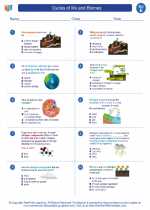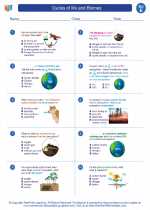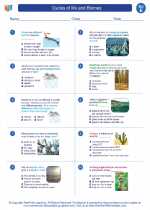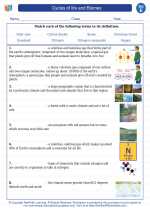Grasses
Grasses are a type of plant that belong to the family Poaceae. They are one of the most important plant families on Earth, with over 10,000 species found in various habitats around the world. Grasses are a vital part of many ecosystems and have numerous uses, ranging from providing food for grazing animals to being used in landscaping and as a source of biofuel.
Structure of Grasses
Grasses have a unique structure that sets them apart from other plants. They typically have long, narrow leaves with parallel veins, hollow stems, and fibrous roots. Their flowers are small and are grouped together in structures called inflorescences, which can take the form of spikes, racemes, or panicles.
Adaptations of Grasses
Grasses have evolved several adaptations that allow them to thrive in various environments. Their extensive root systems help them access water and nutrients from deep in the soil, making them well-suited to survive in dry or nutrient-poor habitats. Additionally, their ability to grow from the base after being grazed or mowed makes them resilient in the face of herbivory.
Ecological Importance
Grasses play a crucial role in many ecosystems. They form the foundation of grasslands and prairies, providing habitat and food for a wide range of animals, from insects to large herbivores. Grasses also help prevent soil erosion and contribute to the water cycle by absorbing and retaining water in the soil.
Human Uses of Grasses
Humans have cultivated and utilized grasses for thousands of years. They are a staple food source for many cultures, with grains such as wheat, rice, and corn being derived from grass species. Grasses are also used as forage for livestock, as well as in the production of materials such as paper, thatch, and biofuels.
Study Guide
- What is the family that grasses belong to?
- Describe the unique structure of grasses.
- Explain one adaptation of grasses that allows them to thrive in various environments.
- Discuss the ecological importance of grasses in ecosystems.
- List three human uses of grasses.
◂Science Worksheets and Study Guides Fifth Grade. Cycles of life and Biomes

 Worksheet/Answer key
Worksheet/Answer key
 Worksheet/Answer key
Worksheet/Answer key
 Worksheet/Answer key
Worksheet/Answer key
 Worksheet/Answer key
Worksheet/Answer key
 Vocabulary/Answer key
Vocabulary/Answer key
 Vocabulary/Answer key
Vocabulary/Answer key
